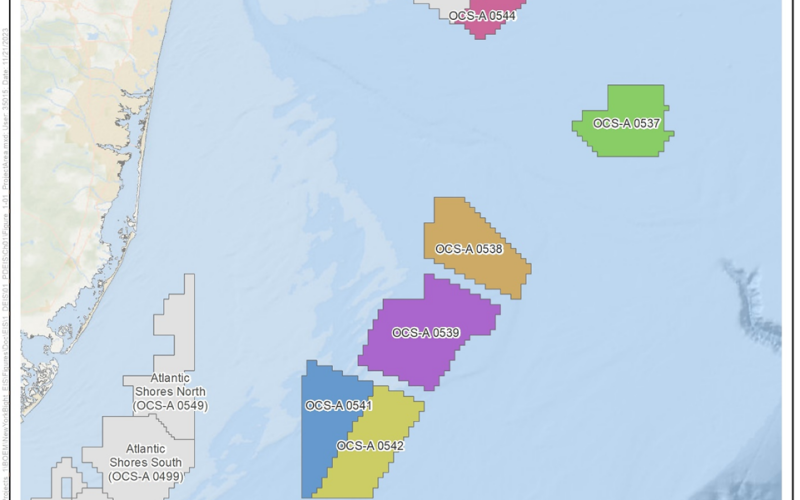With just seven weeks left in the Biden administration, the Bureau of Ocean Energy Management issued a decision on “environmental measures” that should be applied to future offshore wind projects in the New York Bight.
The Dec. 2 record of decision covers six lease areas covering more than 488,000 acres, farther offshore in deeper water than projects already permitted off New Jersey and New York. BOEM officials say if fully developed the lease areas could potentially hold wind turbines with a total nameplate rating up to 7 gigawatts. The agency issued its New York Bight Final Programmatic Environmental Impact Statement Oct. 21.
"As we always commit to do, as part of our environmental review, BOEM engaged with Tribes, federal and state agencies, local communities, ocean users, and key stakeholders and reflected their feedback in our Record of Decision," said BOEM Director Elizabeth Klein of the Dec. 2 document. "Their valuable input will assist offshore wind energy developers in taking environmental impacts into account in their project plans. Our regional approach will also create a solid groundwork for future environmental reviews of offshore wind projects in the New York Bight."
The document lists 58 “avoidance, minimization, mitigation, and monitoring (AMMM) measures” across the six lease areas. Developers can consider applying those in construction and operations plans they would submit to BOEM for review under the National Environmental Policy Act. Additional measures could be applied to specific projects to reduce impacts, the agency says.
With the impending arrival of a new Trump administration Jan. 20, the future of wind energy in U.S. waters is very much in doubt. One of the New York Bight lease holders, TotalEnergies SE, has already said it is suspending work on its Attentive Energy project planned off New York and New Jersey.
The 3,000-megawatt array south of New York Harbor could be operational in the 2030s. But TotalEnergies CEO Patrick Pouyanne said Nov. 26 “I have decided to put the project on pause,” at an energy industry conference in London, Bloomberg reported.
Although the developers have obtained offshore leasing rights from BOEM, Pouyanne indicated TotalEnergies may wait for political winds to shift again.
“I said to my team, the project in New York, we’ll see that in four years,” he said, Bloomberg reported. “But the advantage is it’s only for four years.”
The U.S. offshore wind industry was already battered with escalating costs, supply chain issues and developers trying to re-negotiate their power purchase agreements. Then in May 2024 then-candidate Donald Trump promised to kill offshore wind projects on his first day in office.
BOEM is pressing on with the Biden administration’s all-of-government drive to develop wind power. So far the agency has issued approvals for 10 projects off the East coast, with a future potential generation up to 15 gigawatts.
Among measures listed in the Dec. 2 document, eight could reduce impacts on commercial fisheries and charter and party boat recreational fishing. Those would “compensate commercial and for-hire recreational fishermen for loss of income due to unrecovered economic activity and shoreside businesses for losses indirectly related to the expected development and provide monetary compensation for lost gear or income, with several proposing design measures to reduce potential fishing gear snags,” according to the document.
Taking those steps “could reduce overall impacts on commercial fisheries and for-hire recreational fishing…from negligible to major to negligible to moderate, a reduction driven largely by the compensatory mitigation that would mitigate impacts on commercial and recreational fishing operations,” the agency projects.





